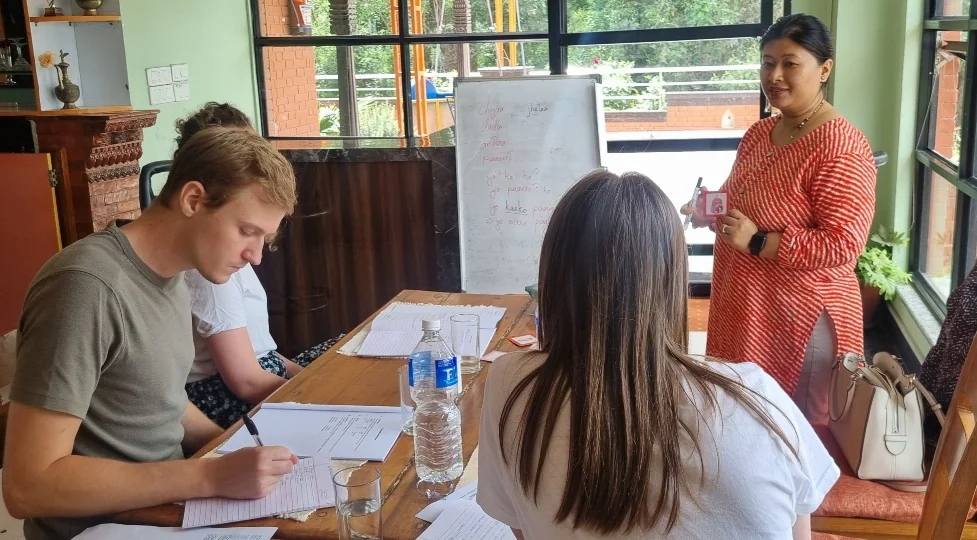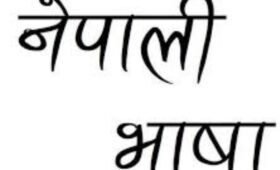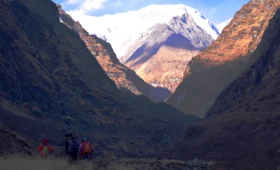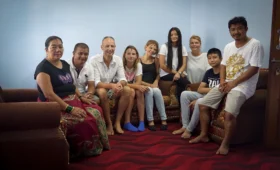A Beginner’s Guide to Nepal’s Language and Culture: Key Phrases and Customs
When you embark on a journey to Nepal, you’re not just exploring a stunning landscape but also diving into a rich tapestry of culture and tradition. Nepal is a land where the majestic Himalayas meet warm hospitality, and the best way to connect with its people is by understanding their language and customs. In this beginner’s guide, we’ll equip you with essential phrases, cultural insights, and tips to enhance your Nepalese experience.
Understanding Nepali Language and Greetings
Nepal’s official language is Nepali, but you’ll also find diverse ethnic groups with their own languages. Here are some key phrases and greetings to get you started:
- Namaste: The universal greeting in Nepal, with palms pressed together. It means “I salute the divine in you.”
- Dhanyabad: Thank you. Express your gratitude with this simple word.
- Ke ho?: “What is it?” Use this to ask about something you don’t understand.
- Kati paisā ho?: “How much does it cost?” Useful for shopping and negotiating.
- Maaph garnuhos: “Excuse me” or “Sorry.” Politeness goes a long way.
- Timi lai kasto chha?: “How are you feeling?” A friendly way to inquire about someone’s well-being.
Embrace the Customs and Traditions
- Remove Your Shoes: Before entering homes, temples, or monasteries, it’s customary to take off your shoes.
- Right Hand Gesture: Always use your right hand when giving or receiving something, especially food.
- Dress Modestly: Dress respectfully, especially when visiting religious sites.
- Circumambulate Stupas and Temples Clockwise: When you walk around these structures, do so in a clockwise direction as a sign of respect.
- Respect Elders: Greet elders first, and when receiving something from an elder, use both hands.
Explore Nepali Cuisine
Nepal offers a diverse range of delectable dishes. Don’t leave without trying:
- Dal Bhat: A staple of Nepali cuisine, it’s a lentil soup served with rice and various accompaniments.
- Momos: Dumplings filled with meat or vegetables, often served with spicy dipping sauces.
- Sel Roti: A traditional, ring-shaped rice flour bread, especially popular during festivals.
- Tea: Enjoy aromatic, flavorful cups of masala tea or butter tea.
- Newari Cuisine: Explore the unique flavors of Newari food, rich in spices and local ingredients.
Festivals and Celebrations
Nepal is a land of festivals, and participating in these events can provide a deep cultural immersion:
- Dashain: Nepal’s biggest Hindu festival, akin to Diwali, celebrated with much fervor.
- Tihar: The festival of lights, celebrating animals and honoring different deities.
- Holi: Known as the “Festival of Colors,” it’s a lively, vibrant celebration.
- Indra Jatra: Kathmandu’s traditional street festival, a lively cultural experience.
- Losar: The Tibetan New Year celebrated in the Himalayan regions.
Local Experiences and Cultural Exchange
The best way to learn about Nepal’s culture is to engage with its people. Attend local events, visit markets, and take part in homestays to gain insights into daily life.
By mastering a few key phrases and understanding cultural customs, you’ll not only enhance your travel experience but also show respect for the people and traditions of Nepal. The culture and language of Nepal are an integral part of the journey, and immersing yourself in these aspects will create lasting memories and meaningful connections. So, remember your “Namaste” and get ready to explore the enchanting world of Nepal. Dhanyabad (thank you) for reading!



